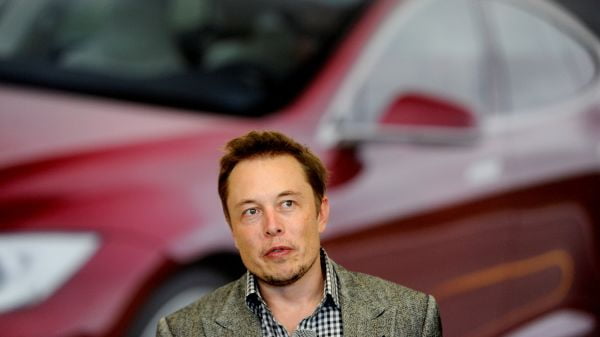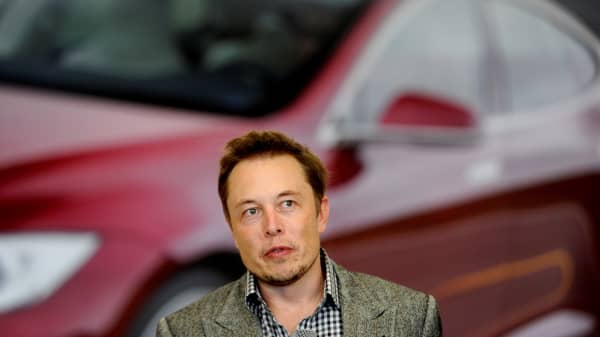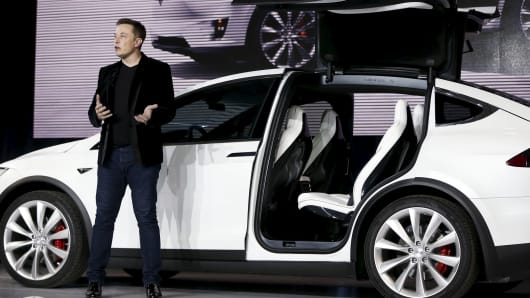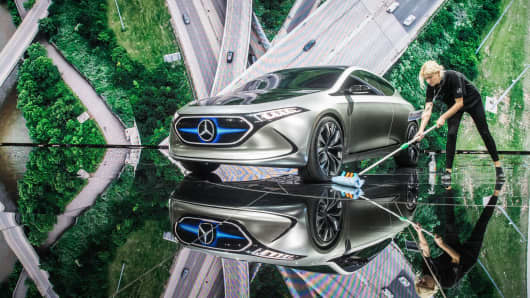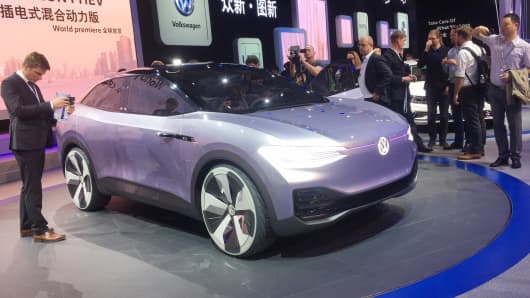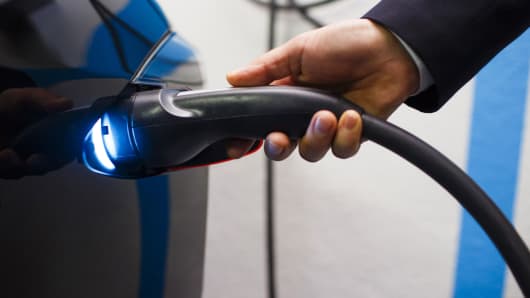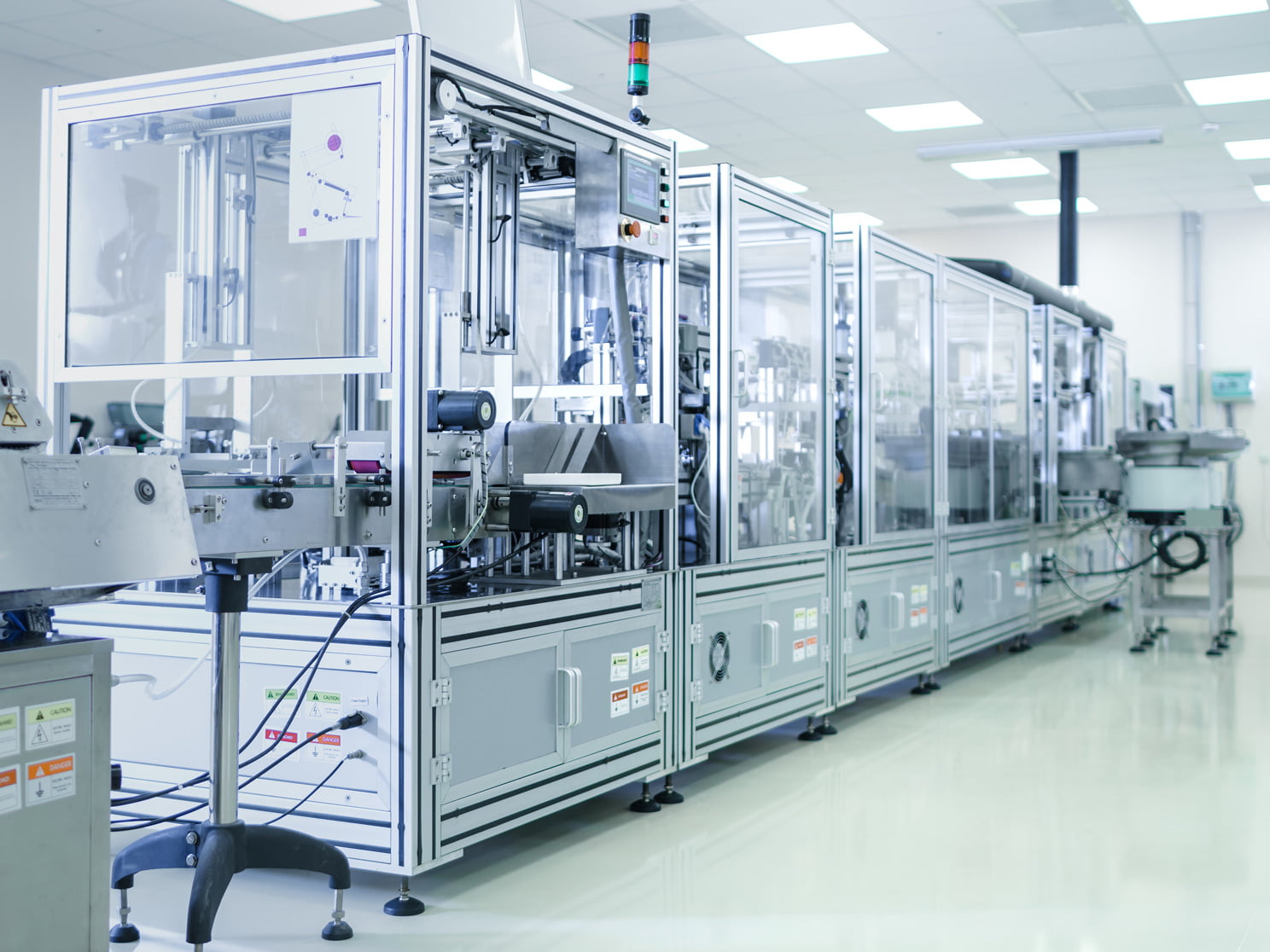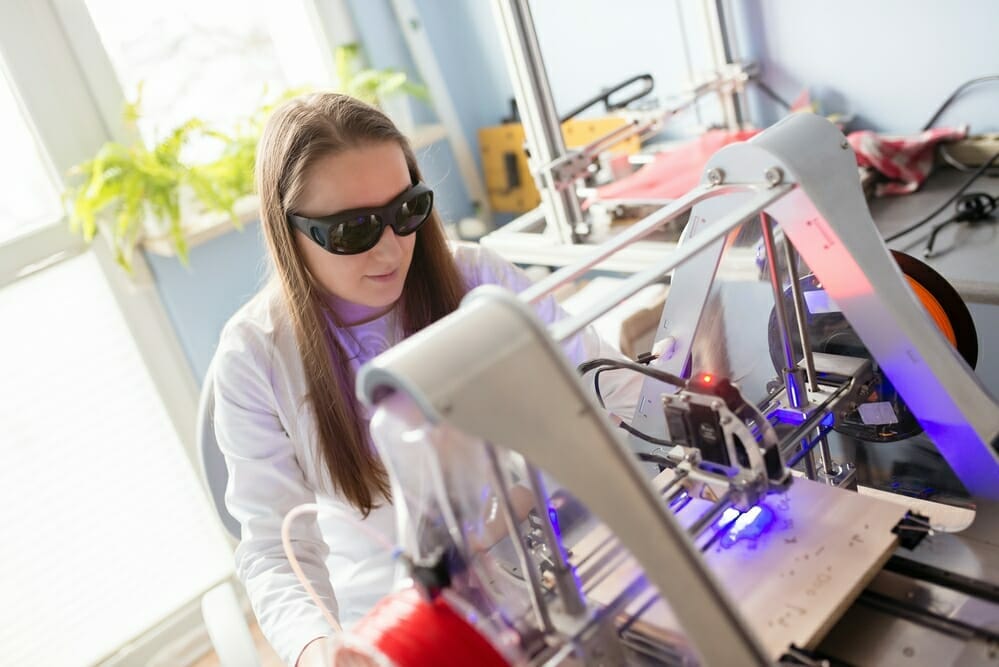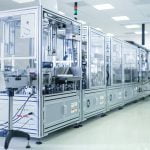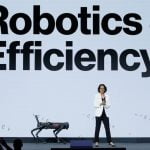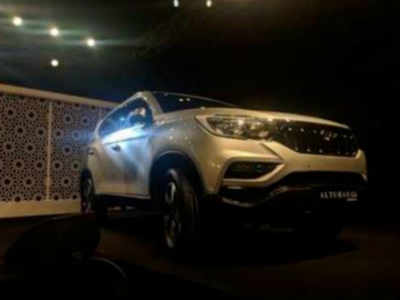It’s been nearly a century since any automaker was in a more enviable position than Tesla.
Despite relatively disappointing fourth-quarter earnings that missed analysts’ estimates, Tesla finished 2018 with an astounding 83 percent share of the U.S. battery-electric vehicle market, CEO Elon Musk boasted Wednesday. That hasn’t happened since the years following the start-up of Ford’s first moving assembly line.
Of course, as Ford found out, that sort of performance is all but impossible to maintain. Despite revealing new details about plans to increase production of the Model 3, while launching three new product lines over the next year, Tesla’s perch atop the luxury electric vehicle market is facing some serious challengers in the coming years.
Automakers from Acura to Zotye are plugging into electric vehicles, with industry analysts expecting to see nearly a dozen new all-electric vehicles in U.S. showrooms by the end of 2019, with dozens more coming to market in 2020. That doesn’t include all the plug-ins and conventional hybrids also being rushed to market. Jaguar, Mercedes and Volkswagen are making a direct bid for Tesla’s customer base, recently debuting several all-electric luxury models that industry analysts say will give Musk’s signature Model 3 sports sedan and Model X utility vehicle a real run for their money.
Contents
Epic pile-up
Detroit-based consultancy AlixPartners put it bluntly in a study of the EV market released last year, warning that the auto industry is heading for a “pile-up of epic proportions.” And it’s all the more concerning when one considers that the industry could spend more than $200 billion to add new battery-based models by the middle of the coming decade.
It’s difficult to find a manufacturer that isn’t planning to add a battery-based product, with more than a few intending to completely shift to all-electric models in the years ahead. That includes General Motors, whose CEO, Mary Barra, says the domestic giant is on “a path to an all-electric future.”
There’s just one problem: while sales of battery-based vehicles are on the rise, they still constitute a minuscule fraction of the American, European and Japanese markets. And even though sales are growing in China, they still constitute less than 4 percent of that market’s total. So even as manufacturers push forward, many industry officials fear they could be at risk of wasting billions.
“The equations around electric aren’t making money,” Jack Hollis, general manager of the Toyota brand, told trade publication Automotive News on Sunday after meeting with franchisees to discuss future product plans at the National Automobile Dealers Association convention in San Francisco.
Game changer
Not everyone is so glum. During a Wednesday evening earnings call, Musk outlined plans that could see the company’s sales increase by 50 percent or more this year alone — before Tesla rolls out an assortment of new models including its planned Model Y electric SUV.
What’s clear is that the original Tesla Model X was a game changer.
While conventional hybrids have been around for two decades, the first modern plug-based vehicles came to market only in 2010. The Chevrolet Volt was a plug-in hybrid-electric vehicle, or PHEV, pairing a modest 16 kilowatt-hour battery and motor drive with a gasoline engine allowing it to keep going once the pack was drained. The all-electric Nissan Leaf used a 24 kWh battery delivering just under 100 miles of range under the best of conditions. Initially, competitors like Ford, Honda and Mitsubishi followed the low-range formula, insisting customers could get by on less than 100 miles for typical daily needs.
The launch of the original Tesla Model S shifted the conversation, the sedan pushing above 200 miles per charge and then boosting that to more than 300 with an optional, long-range battery pack. With only the rarest of exceptions, everything coming to market now and going forward is expected to deliver a minimum of 200 miles range, said Stephanie Brinley, principle auto analyst at IHS Markit.
But after a long delay, Tesla will begin seeing plenty of competition in the months and years to come, not only from battery-focused challengers as diverse as Zotye and Rivian, but from established automakers, as well:
GM
Chevrolet was the first to copy the Tesla formula with its 2017 Bolt EV getting 238 miles per charge. During a media event at the North American International Auto Show earlier this month, parent GM announced Cadillac will be next to go long-range for 2021, using a platform that could eventually be used by dozens of other models.
Nissan
Nissan unveiled a 226-mile version of the Leaf at the Consumer Electronics Show in Las Vegas this month. It could appeal to buyers who’ve been waiting for the long-promised $35,000 base Tesla Model 3 – the current starting price $44,000; Meanwhile, Nissan will offer eight all-electric models by 2022, with its high-line Infiniti brand switching entirely to either plug-ins or BEVs.
Jaguar
Most upscale European marques are getting into the all-electric game. Jaguar recently launched the I-Pace SUV with Audi soon to follow with the all-electric e-tron utility vehicle and more to follow. Its sibling Porsche brand will start marketing its Taycan electric sports car later this year.
BMW
BMW has offered a low-range all-electric, the i3, since 2013, along with the plug-in hybrid i8 sports car. The Bavarian automaker is now developing a wide range of battery-electric options for virtually every vehicle in its lineup.
Mercedes, VW
Mercedes-Benz and Volkswagen both plan to start marketing long-range BEVs in 2019, and both plan to create unique electric sub-brands, Mercedes-EQ and Volkswagen I.D. The latter will include the I.D. Buzz, a battery-electric revival of the marque’s classic Microbus.
During an appearance at the Detroit Auto Show earlier this month, Volkswagen CEO Herbert Diess announced plans to invest $800 million to start producing two of those products at its sprawling U.S. assembly plant in Chattanooga, Tennessee. That should create about 1,000 new jobs once production begins in 2022, he said during a news conference.
“The U.S. is one of the most important locations for us and producing electric cars in Chattanooga is a key part of our growth strategy in North America,” said Diess, who previously said VW will spend an estimated $50 billion to purchase batteries by mid-decade.
Destined to lose money
Beyond the cost for purchasing parts, the AlixPartners study estimated “by 2023 a whopping $255 billion in R&D and capital expenditures (will be) spent globally on electric vehicles, and that some 207 electric models are set to hit the market by 2022.” The problem, a summary of the report concluded, is that “many of them destined to be unprofitable due to currently-high systems costs, low volumes and intense competition.”
“We have to reduce the amount of money everybody’s pouring in,” echoed Don Walker, CEO of Canada-based mega-supplier Magna International, during a mid-January speech to the Automotive News World Congress in Detroit.
For EV proponents, the good news is that U.S. sales of plug-based models nearly doubled last year, from 199,818 in 2017, according to InsideEVs.com, to 361,307.
In China, where new energy vehicle rules are meant to foster demand for zero-emissions vehicles, sales grew even faster. In December 2018 alone, Chinese consumers purchased 181,385 plug-ins during December alone, reports the EV Sales Blog, a 70 percent jump. For all of 2018, Chinese sales came to 1,102,375.
Even so, plug-ins and pure electrics still accounted for barely 4 percent of the Chinese market, and 2 percent of the American. And a closer look could leave one still more skeptical.
In the U.S., only the Tesla Model 3 — of all the electrified models now on the market — is currently selling more than 10,000 a month, noted Toyota’s North American CEO, Jim Lentz. And of the 94 “electrified” vehicles currently on the market — including hybrids, as well as plug-ins and pure battery-electric vehicles — only six top 2,000 a month.
20 percent by 2030
EVs “aren’t ready to take over the world,” Lentz warned during an appearance in Detroit this month, adding that, “There’s not much growth.”
Whether the growth rate will pick up is a matter of intense debate. If for no other reason than the rapid shift to electrified powertrain technology, the AlixPartner study predicts pure electric models will account for 20 percent of U.S. sales by 2030, while reaching 30 percent in Europe and 35 percent in China, now the world’s biggest motor vehicle market overall.
Looking slightly further out, a separate report by the Boston Consulting Group sees that vehicles using all the various forms of electrified powertrain technologies — including conventional hybrids — will reach the “tipping point,” early in the 2020s, said BCG analyst Thomas Dauner.
Not everyone is so upbeat, and industry analysts point to a number of reasons why demand for plug-based models has lagged optimistic forecasts over the years — the Obama administration once predicting there would be 1.5 million of them on the road by mid-decade.
‘Range anxiety’
“When people asked why customers aren’t buying electric vehicles, our response was that they just didn’t like what was being sold,” said Pasquale Romano, CEO of ChargePoint, the nation’s largest operator of public charging stations.
“Range anxiety” is the most commonly cited problem, especially when it comes to first-generation BEVs. Pushing up to 200 miles or more has helped reduce that worry but not eliminated it entirely. Part of the problem is that charging times still are lengthy, especially with conventional Level 1 and 2 chargers that, on a vehicle like the Tesla Model S P100D can require nearly a day plugged in if the battery is fully drained.
The newer Level 3 chargers which rely on 480 volt direct current, can sharply reduce that, often delivering an 80 percent “refill” in under an hour. And even more advanced charging systems that are beginning to be rolled out by companies like ChargePoint, EVgo and Electrify America could deliver up to 20 miles range per minute, closing in on what a motorist might expect from a gas pump.
ChargePoint alone expects to add almost 25,000 more charging stations over the next five years, most of them high speed, according to CEO Romano. But these high-speed systems are still few and far between. This reporter is currently test-driving a Jaguar I-Pace and went to plug in at a Level 3 system available in the Detroit suburb of Ferndale. It proved to be out of order and the next nearest fast charging station was more than a dozen miles away.
Sticker shock
Cost is the other obstacle. EVs traditionally cost thousands of dollars more than conventionally powered vehicles. The gap has been shrinking, in part due to competition that has forced manufacturers to subsidize their offerings. During a media roundtable at the Detroit auto show, Fiat Chrysler CEO Mike Manley said the company recovers just 60 percent of the added cost for electrified powertrain technology. At one point, his predecessor, Sergio Marchionne, only half-jokingly asked motorists not to buy the company’s then-new Fiat 500e because it lost more than $10,000 on each vehicle.
Musk has been struggling to lower the price on its signature Model 3 sports sedan, saying it’s impossible to profitably sell a base model for $35,000 as he originally planned. Though he’s dropped the price in recent months, the base model still costs well above $40,000.
“It’s important to appreciate, the demand for the Model 3 is insanely high. The inhibitor is affordability,” Musk told analysts Wednesday. “People literally don’t have the money to buy the car. It’s got nothing to do with desire. They just don’t have enough money in the bank account … if we made it more affordable, the demand is extraordinary.”
[“source-cnbc”]

